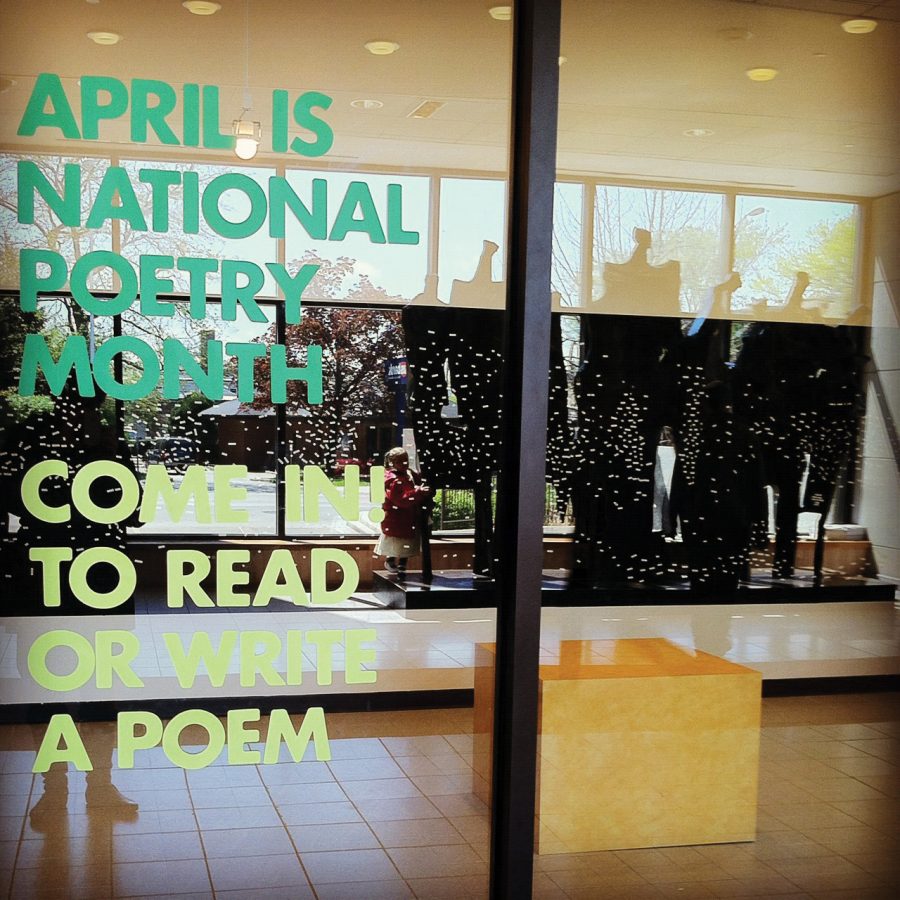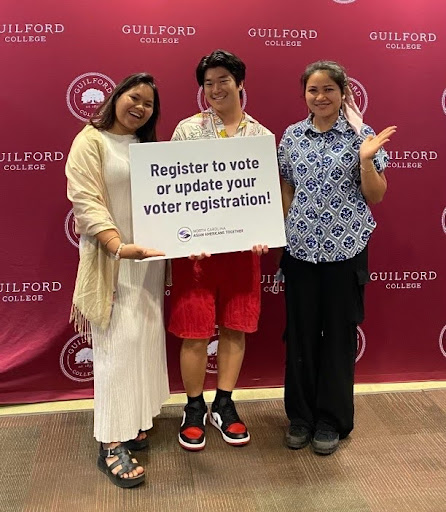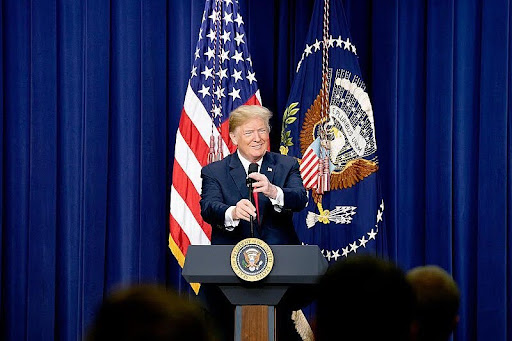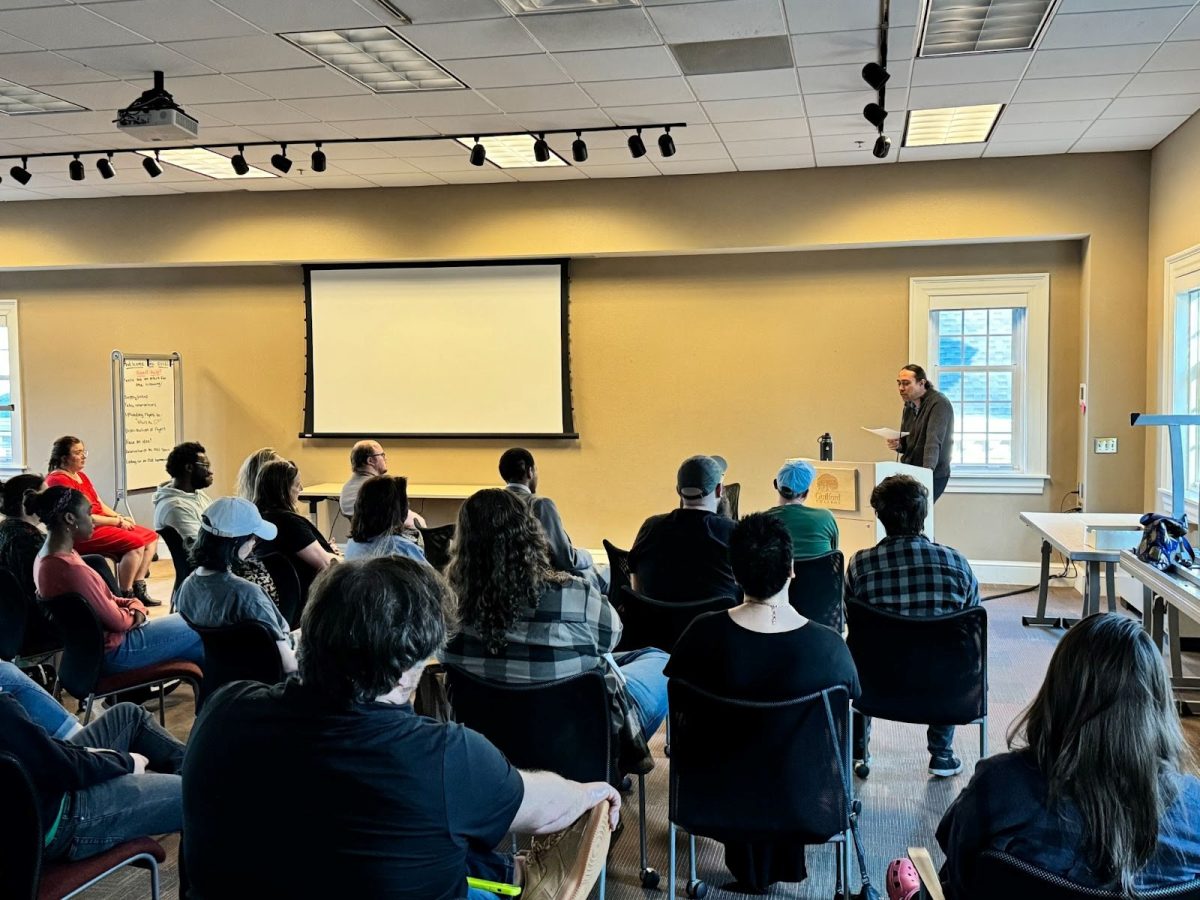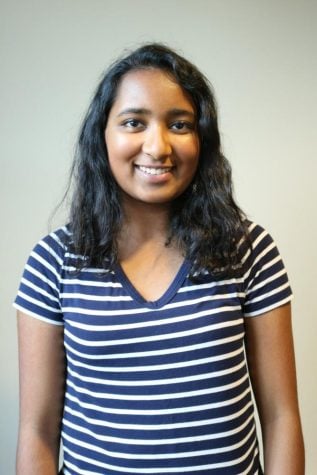Pink, gray and beige cliffs are complemented by streaks of orange paint as though the sun had turned its rays into rain.
This scenery is depicted in a painting titled “The Cliff,” which is one of 36 paintings in the new “Altered States: Painting Myanmar in a Time of Transition” art exhibit. The exhibit opened on Wednesday, Nov. 9. A reception was held that evening with speakers Eric Mortensen, associate professor of religious studies and international studies program coordinator, and Brian James, a junior from Myanmar.
The talk, titled “The Colors of a Changing Myanmar,” was the first event of the Peace Week sponsored by Guilford College’s Amnesty International chapter.
The two speakers explained the culture and history of Myanmar to aid visitors in understanding the significance of the paintings.
James began the talk by presenting cultural practices in Myanmar, the first of which was the practice of using thanaka powder, a product made from ground bark. The thanaka powder was depicted in several of the paintings.
“Thanaka is one of the most popular cosmetic products in Myanmar,” said James. “We paste it on our faces as a symbol (of culture).”
Mortensen covered the history of Myanmar, from its time under British rule to military rule and the period of transition and reformation from 2011 to 2014. He mentioned that during this later period, artistic expression in Myanmar was restricted by the government.
“Until 2013, any painting that went on display in Myanmar had to go through a censorship board,” said Mortensen.
Not only was art restricted, but popular styles of painting were also constrained.
“Under this previous regime in (Myanmar), there was a lot of artistic repression and abstraction that was frowned upon,” said Terry Hammond ’81, founding director and curator of the art gallery. “They couldn’t paint certain things that they wanted to.”
However, Mortensen expects changes to occur in the country.
“I think when we watch Myanmar over the next few decades, we should be watching what happens with the relationship between the central government and the people,” said Mortensen.
Changes in regime are reflected in the paintings as well.
“All of these paintings being done in the last five years — it’s kind of like there’s this new sense of artistic freedom,” said Hammond.
The influence of Buddhism on the country and on its art was also a focus of the talk.
“(The people of Myanmar) don’t have much history and don’t have a shared language,” said Mortensen. “But they are Buddhists. This has been a unifying factor.
“When we think about how to interpret art in Myanmar, we can’t lose the Buddhist influence that is the root of inspiration for the artists.”
The talk primed guests to view the exhibit in a new light.
“When we look around this room and look at the art, I think the first thing that will strike us is the colors,” said Mortensen. “They’re very bold and are colors we are not accustomed to. These bright, vibrant colors are new to Myanmar’s art.
“I think we need to get accustomed to these colors in order to appreciate the art more deeply.”
The color palettes captivated visitors, and the paintings prompted curiosity about the culture of Myanmar.
“It was really interesting to learn about the culture,” said sophomore Samantha Brooks. “It makes me want to study it and go (to Myanmar). It’s cool to see the new art movement. (The paintings) have a lot of cultural aspects.”
These paintings arrived on campus primarily due to the interest of Guilford’s faculty in bringing new perspectives to the campus.
According to Hammond, the collector of the paintings put out an offer through ASIANetwork to display the paintings. ASIANetwork is a consortium of about 160 North American colleges, including Guilford, which promotes studies in Asian arts.
“I think the dean’s office at Guilford got the initial post from ASIANetwork and they sent it to several different faculty members, including (Associate Professor of Foreign Languages) Hiroko Hirakawa, (Professor of Political Science) George Guo, Eric Mortensen and (Charles A. Dana Professor of Psychology) Kathy Adams,” said Hammond.
“And they all were excited about the possibility of bringing it, and they got me in the loop and said, ‘do you think there’s any way that we could do this?’ It just so happened that I had this time slot available.”
By visiting the exhibit, students can gain insight on various artistic styles and on the culture of Myanmar.
“Many of the people that I’ve talked to don’t even know where (Myanmar) is,” said James. “It’s a great opportunity for people to come to the gallery and grasp the culture.”

